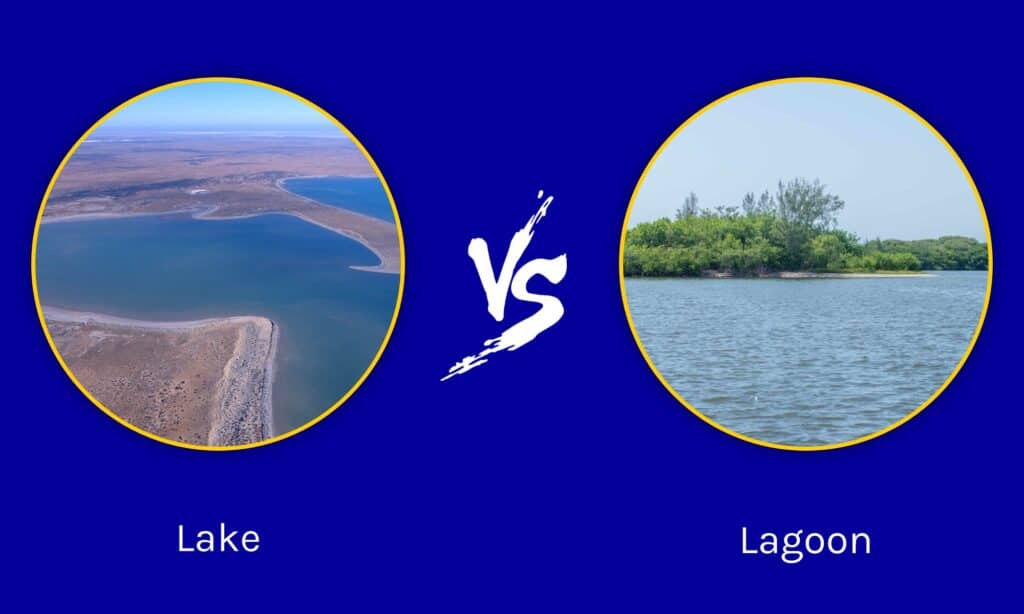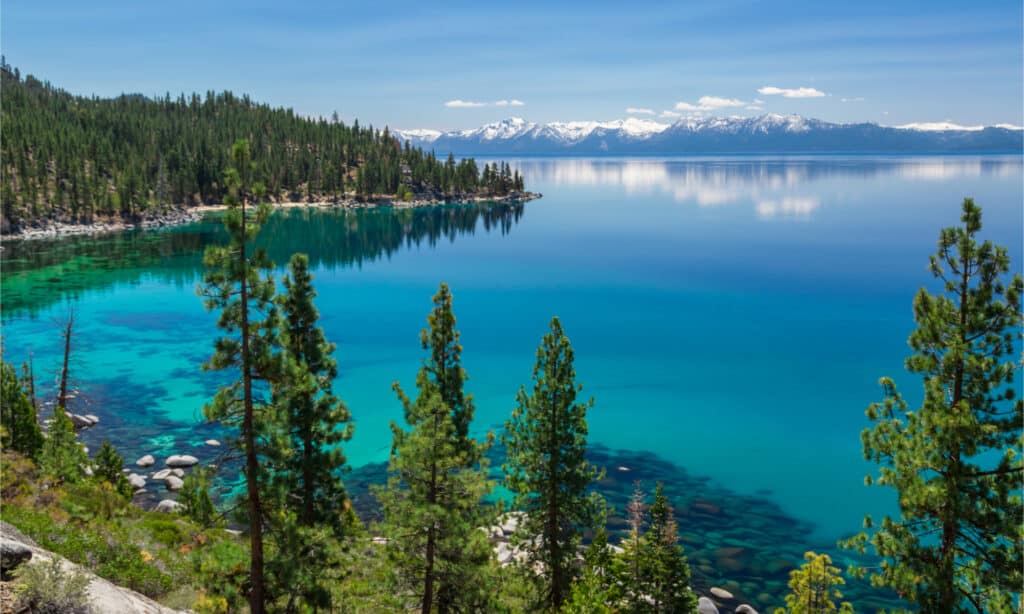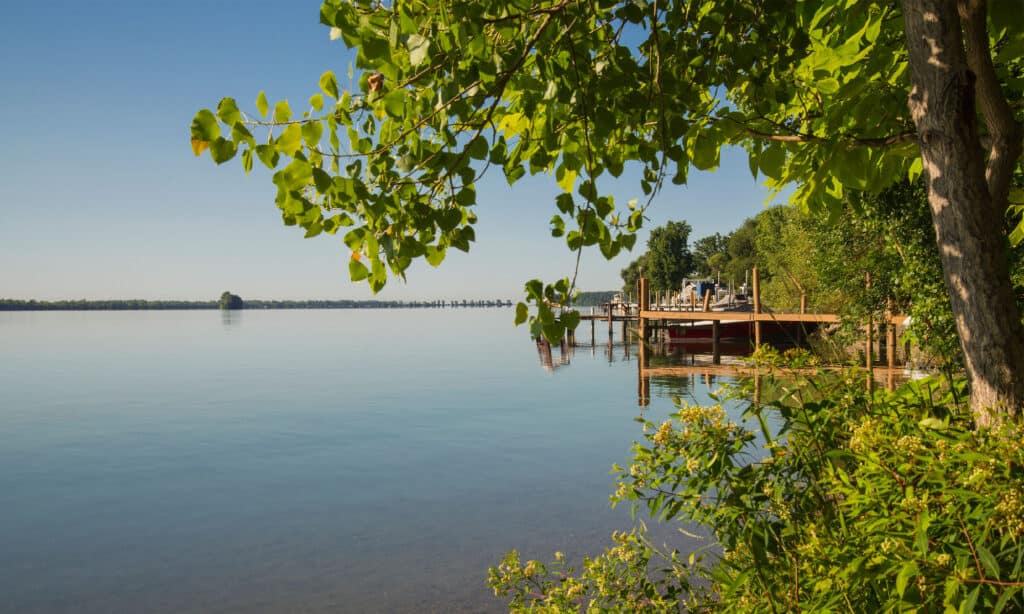A lake and a lagoon are both free-standing bodies of water, right? Not exactly. Their location and the way they get water from their water sources in a lake vs lagoon are different.
A study done in South Africa showed that lagoons and lakes could be differentiated by which supports marine species in its waters. If it supports marine species, it is not cut off from the ocean, and it is a lagoon. If it only supports freshwater species, it is a lake.
Lagoons occupy 12% of the earth’s coastlines, while lakes take up less than 1% of the earth’s landmass. What are some other similarities and differences between a lake and a lagoon? We’ll take a closer look now.
Lake vs Lagoon Explained

| Lagoon | Lake | |
|---|---|---|
| Type of Water | Mixed Fresh and Salt | Entirely Fresh or Salt Water |
| Landlocked | No | Yes |
| Depth | Shallow | Deep |
| Animal Habitats | Varied and Adaptable | Only Freshwater and Stable |
| On the Coast | Yes | Usually No |
| Associated River | Not Necessary | Yes |
| Marine Life Present | Yes | No |
These are the similarities and differences between a lake and a lagoon:
- Lagoons tend to be connected to marine habitats, whereas lakes are connected to freshwater habitats.
- Lakes are almost always landlocked, while lagoons connect to a bigger body of water.
- Lagoons are usually shallower than lakes.
- Lagoons have varying salinities, whereas lakes are either freshwater or saltwater.
- Animals in lagoons can tolerate varying brackish conditions, while animals near lakes need freshwater.
- Lakes are inland, while lagoons are usually along the coast.
- Lakes almost always have an associated river, while lagoons do not.
What is a Lake?

If a lake doesn’t have an outflow, it can become a saltwater lake.
©iStock.com/zhuzhu
Lakes are bodies of water that form on the earth’s surface in a big indentation. Glaciers, tectonic plate movement, dams, and closed-off rivers are why indentations form that turn into lakes. These indentations are called basins.
Lakes are almost always landlocked, and they exist within a basin that collects water quicker than water runs out of it. Lakes are differentiated from ponds by their large surface area and depth. They are a harbinger of runoff water. Runoff is created by precipitation which is brought through various channels like rivers and streams to the lake. The lake is both fed and emptied by rivers and streams.
A lake usually has one river flowing out of it and at least one flowing into it, with more flowing in than out. Lakes without an outlet can turn into salt lakes since the water isn’t swept through the lake and through the channel that drains it.
What is a Lagoon?

Lagoons are bodies of water that are partially separated from the ocean due to a barrier.
©iStock.com/Maridav
When a larger body of water is separated from a smaller body of water due to a natural barrier of some kind, the smaller body of water is a lagoon. A lagoon is a specialized estuary where freshwater and saltwater mix.
Lagoons sometimes look like lakes, but they’re often formed by reefs or sandbars acting as above water landmasses separating the lagoon from the sea. Sometimes lagoons are formed when an underwater island supports such abundant life that a ring is formed with a deep depression in the middle of the circle. These are atoll lagoons.
Coastal lagoons are the more classic lagoons almost cut off from the ocean by above water islands, sandbars, or smaller coral reefs. There is almost always a permanent inlet into the ocean, so there are saltwater and tidal components to lagoons.
Some lagoons have rivers flowing into them, though it’s not required for a river to be present for a body of water to be a lagoon. The primary water source for a lagoon is almost always the ocean. However, if there is a river flowing into the lagoon, this can cause salinity levels to vary widely based on both the tides and the river’s outflow. Times of high rain and a low tide will result in much more freshwater than during a drought at high tide.
Why are Lakes Deeper than Lagoons?

Lake Tahoe is over 1,600 feet deep.
©topseller/Shutterstock.com
Depending on the lagoon you’re analyzing, they’re generally between 65 feet and 200 feet deep. Lakes, on the other hand, can be miles deep. That isn’t to say that every lake on the planet is deeper than the average lagoon, but lakes are generally deeper than lagoons.
Lagoons are usually formed along shallow coastlines that descend slowly, then either rise again, or a reef forms a barrier to the open ocean. Lakes, on the other hand, are the collection of water in a basin or valley that can angle down at a very steep rate.
Lake Tahoe is one of the deepest lakes in the United States at over 1,600 feet. It was formed by moving glaciers during the last ice age, which carved deep holes into the ground into which the glacier melted. That’s why Tahoe is as clear as it is today.
This is a stark contrast to lapping water from the tides being subdued by a barrier next to the ocean, and it is one of the major reasons that a lake is almost always deeper than a lagoon.
How Do Ecosystems Differ Between a Lake vs Lagoon?
Lakes provide permanent homes to big fish that can stay below ice levels in colder climates. Lagoons provide more temperature-controlled waters, though the type of water available differs depending on circumstances.
Lagoons differ in salinity so much that they don’t have a ton of underwater biodiversity, though terrestrial and plant biodiversity is immense along the shore and on land.
Lakes offer a stable environment where species reliant on freshwater exist, while the animals in lagoons are equipped to handle both freshwater and saltwater environments. Despite a lake’s stability and safety, it doesn’t foster uniqueness in the same way that a lagoon can among flora and fauna.
Why are the Great Lakes Not Considered Seas?

The Great Lakes hold 21% of the world’s surface water.
©iStock.com/JerryB7
The Great Lakes in North America are not seas because they are not salty. However, salinity isn’t the only determinant for picking between the moniker sea or lake. In general, a sea was once connected to the ocean, while a lake has always had freshwater sources.
The Great Lakes hold an immense amount of water. 21% of the fresh water on the world’s surface is in the Great Lakes. These lakes are sometimes called inland seas since they have waves, currents, winds, and big depths.
Thank you for reading! Have some feedback for us? Contact the AZ Animals editorial team.








